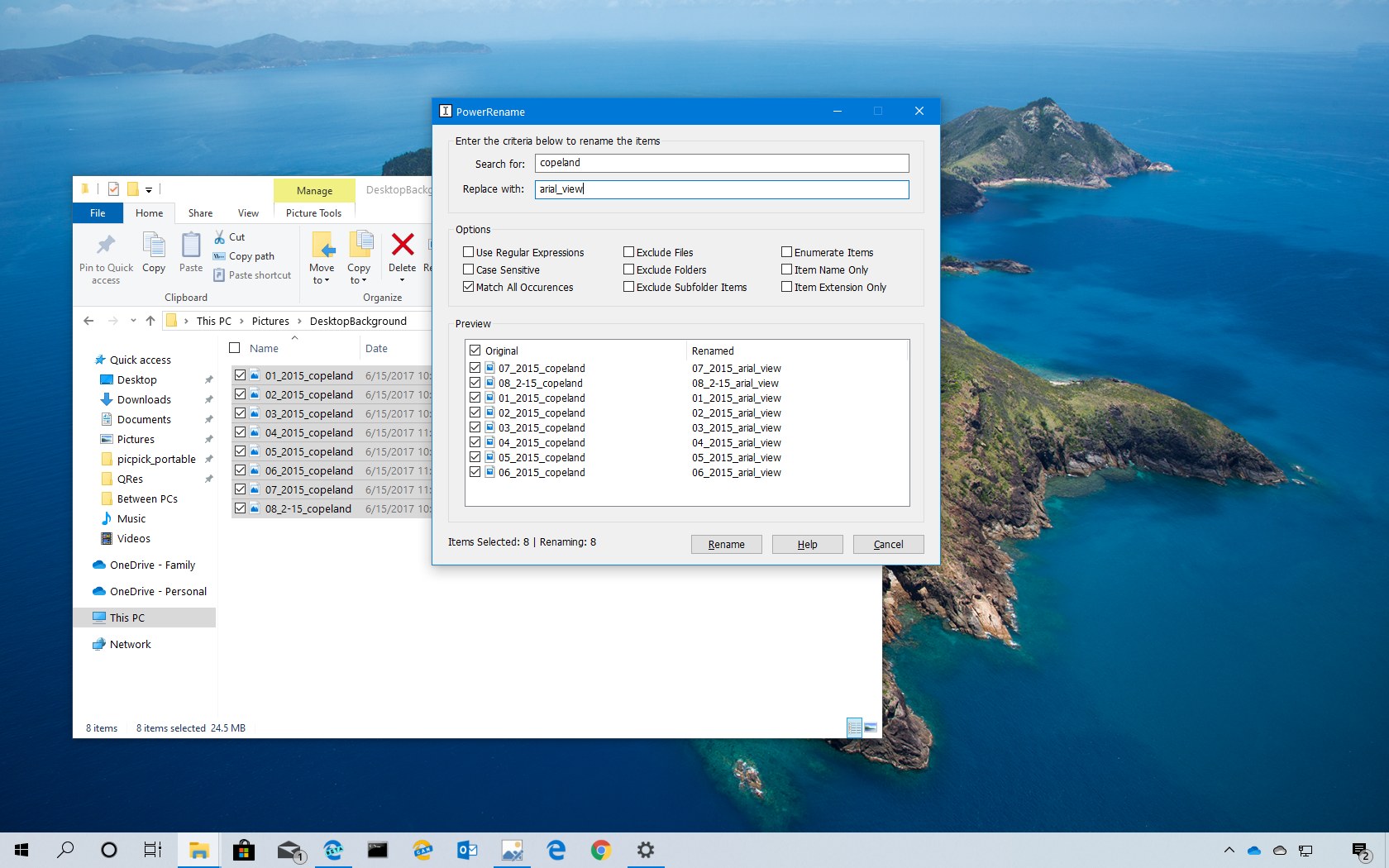While renaming many files at once is already possible in Windows 10, most users find that using Command Prompt and PowerShell commands is more straightforward. However, the PowerToys app for Windows 10 now has a feature called PowerRename that makes it simpler for anyone to rename a large number of files in bulk.
For more complex bulk renaming using regular expression matching or basic search and replace, the context menu will display the PowerRename option. The functionality will display a preview of the things you will rename as you enter data in the search and replace input fields. Additionally, in the preview box, you can select which individual items to include or exclude from the operation.
If you are unfamiliar, PowerToys was a helpful tool created to further customize the Windows 95 experience. It has returned to enhance the Windows 10 experience.
This tutorial will teach you how to utilize Windows 10’s PowerToys PowerRename tool to rename files in bulk.
How to rename group of files on Windows 10
You must install PowerToys in order to use the PowerRename feature if you are not comfortable using commands to rename files in bulk.
Installing PowerToys
Follow these instructions to install the most recent PowerToys version for Windows 10:
website for OpenPowerToys GitHub.
To download the installer, click the PowerToysSetup.msilink.
To start the setup, double-click the installer.
Follow the on-screen instructions (next, next, next) to continue.
Installation of PowerToys
PowerToys will install on your device and activate the PowerRename feature after you finish the procedures.
Renaming group of files
Use these procedures to rename a large number of files in bulk on Windows 10:
OpenFile Explorer.
To rename the files, navigate to the folder containing them.
To rename the files, select them.
Choose the PowerRename option by right-clicking the selection.
The PowerRename context menu item
The section of the files you wish to rename is chosen using the Search for field.
You can specify the new portion of the file name that you wish to rename in the Replace with field.
Use PowerRename to rename files in bulk.
(Selective) You can enable or disable certain settings under the Options section.
-
Use Regular Expressions:
If checked, the Search field will be interpreted as a regular expression. If not clear, the field will be used as a text to be replaced with the text in the Replace field. -
Case Sensitive:
The text specified in the Search field will only match text in the items if the text is the same case. -
Match All Occurrences:
All matches of the text in Search field will be replaced with the Replace text. -
Exclude Files:
Files will not be included in the operation. -
Exclude Folders:
Folders will not be included in the operation. -
Exclude Subfolder Items:
Items within folders will not be included in the operation. -
Enumerate Items:
Appends a numeric suffix to file names that were modified in the operation. For example: foo.jpg -> foo (1).jpg. -
Item Name Only:
Only the filename portion (not the file extension) is modified by the operation. Ex: txt.txt -> NewName.txt. -
Item Extension Only:
Only the file extension portion (not the file name) is modified by the operation. For example: txt.txt -> txt.NewExtension.
To rename, click the button.
The files you chose will take on the name you set after you finish the processes.



